Soldiers participate in Operation Full Tang Soaring at Novo Selo Training Area, Bulgaria, Nov. 16, 2020. Troops trained weeklong for air assaults, attack and security missions, flight operations and soldier movement.
Providing up-to-date information, news and original content on American Military issues.
Soldiers participate in Operation Full Tang Soaring at Novo Selo Training Area, Bulgaria, Nov. 16, 2020. Troops trained weeklong for air assaults, attack and security missions, flight operations and soldier movement.
A service member rides a camel during Saudi Culture Day at Prince Sultan Air Base, Saudi Arabia, Nov. 19, 2020. The event provided the opportunity for military personnel to immerse themselves in local culture and learn more about the history of Saudi Arabia.
Marine Corps Staff Sgt. Mitchell Howroyd, left, and Cpl. Trenton Frost participate in a martial arts instructor course at Camp Lejeune, N.C., Nov. 25, 2020. The course tests skill, mental discipline, warrior spirit and warfighting mentality.
Army Staff Sgt. Warren Mohan launches a Raven unmanned aircraft system during training at Fort Polk, La., Nov. 10, 2020.
Nov. 30, 2020
The Chief of Staff of the Army announces the following general officer assignments:
Lt. Gen. Mark C. Schwartz, U.S. Security Coordinator, Israel-Palestinian Authority, Israel, to commander, North Atlantic Treaty Organization Special Operations Headquarters, Belgium.
Maj. Gen. Joseph P. McGee, director, Talent Management Task Force, Office of the Deputy Chief of Staff, G-1, U.S. Army, Washington, D.C., to commanding general, 101st Airborne Division (Air Assault) and Fort Campbell, Fort Campbell, Kentucky.
Army National Guard
Maj. Gen. Richard F. Johnson, deputy director, Army National Guard, Arlington, Virginia, to commanding general, First Army Division West, Fort Hood, Texas.
Nov. 30, 2020
W. Jordan Gillis, assistant secretary of defense for sustainment and the Defense Department's chief housing officer, is inviting DOD housing residents to participate in the department's annual housing satisfaction survey, which is scheduled to launch in December.
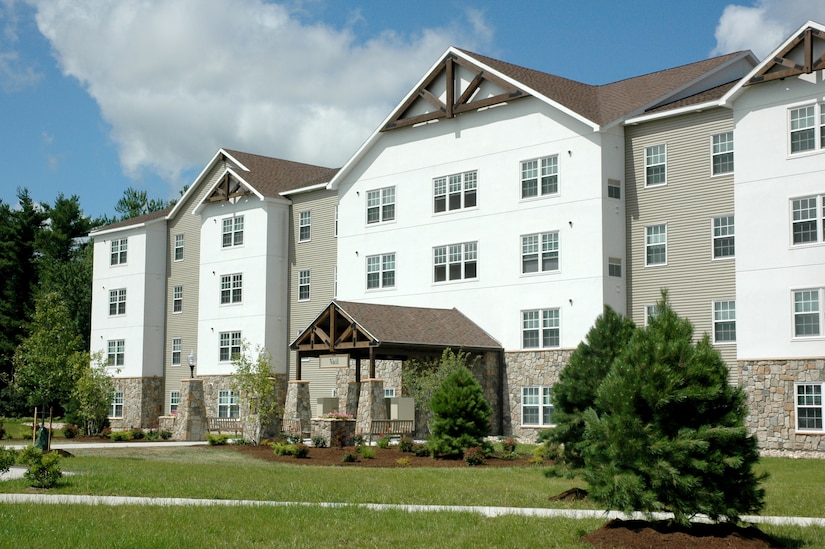
Each year, DOD, working through the military departments, surveys current residents of government-owned, government-leased, or privatized family housing and current residents of privatized unaccompanied housing. The goal is to obtain feedback regarding their living experience.
Survey participation is voluntary, and Gillis encourages residents to share their views about their current housing, resident services and community amenities. According to Gillis, "Resident feedback is important to help the department improve the quality of housing and customer care available to residents."
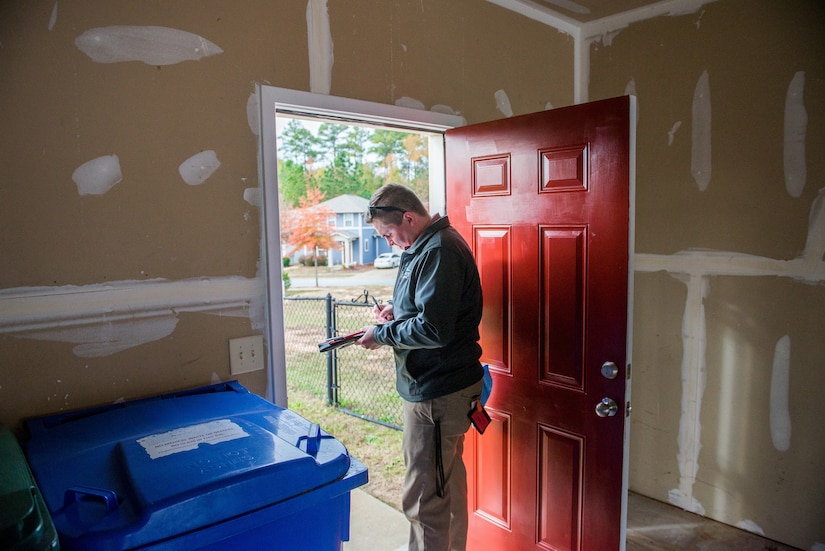
A link to the survey* will be sent via email to each household by one of the two third-party consulting firms administering the feedback collection, tabulation and analysis on the department's behalf. Only one person per address will receive the invitation email. All respondent information will be kept confidential. It will not be linked to the overall feedback results shared with DOD or the results that DOD shares with privatized housing companies or other stakeholders.
The survey results will help inform plans for near-term and future improvements to housing, resident services and community amenities. Gillis emphasized the importance of getting the perspectives of service members and families so the department can provide them with a better quality of life through improved housing and community services.

Each military service will announce the specific date in December when its survey will launch; each survey will remain open for responses for at least 45 days. Residents of DOD government-owned, government-leased or privatized housing should contact their installation's military housing office if they have questions or need technical support, or if their household does not receive an email containing a survey link by Dec. 18.
*OMB Control Number: 0704-0553; OMB Exp. Date: 03/31/2022
Nov. 30, 2020 | BY Keith Pannell
Anyone who had to quarantine for two weeks since the COVID-19 pandemic started can tell you that quarantining is not fun.
After the German government put the quarantine in place, U.S. Army Europe-Africa followed suit. In fact, USAREUR-A has kept its quarantine at 14 days, with no testing out, even after the host nation has dropped the German quarantine to 10 days with a negative test.
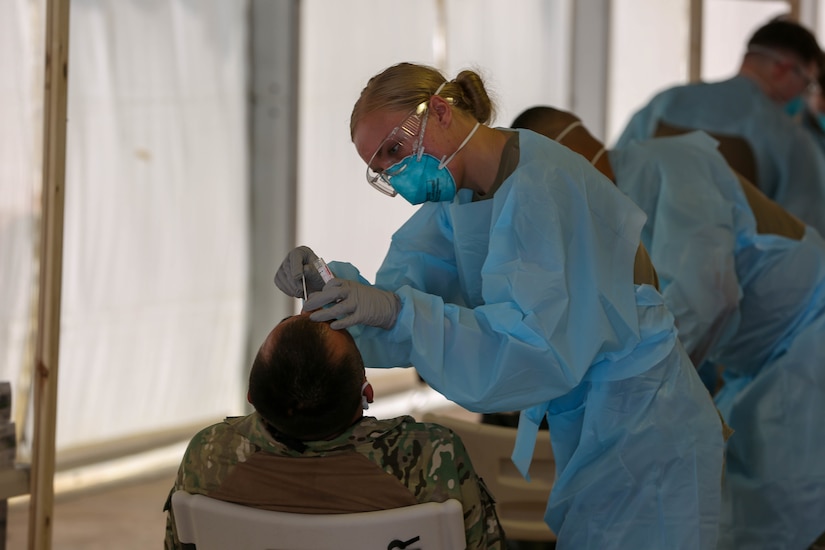
Those who are quarantining are not supposed to break that restriction - not for appointments, not for groceries and not because they're feeling cooped up.
"If a soldier is notified by Team Trace they have tested positive for COVID-19, they will go on quarantine for 14 days," said Army Maj. Chase Crabtree, U.S. Army Garrison Rheinland-Pfalz director of emergency services. "Unfortunately, sometimes around day 10 or 11, they might start to feel cooped up and think about getting out of the barracks or the house."
Crabtree said he completely understands the temptation to go for a walk, to the commissary and post exchange, or go for a Doner kebab or a Big Mac, but leaving quarantine would be a bad idea.
"For the overall health and safety of the community, it's imperative that if you're COVID-19 positive or you're on restriction of movement as a close contact, that you stay in quarantine," Crabtree said. "If you need assistance, you have a chain of command. You have support groups and sponsors who can go out and get groceries, or who can run a few errands for you, but you need to make the right decision and stay home or in your lodging room when you're quarantined."
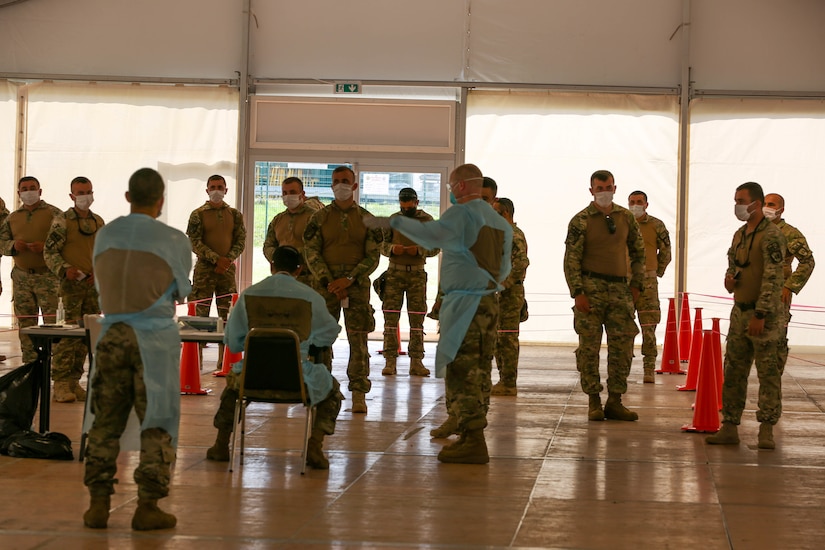
When a person is put on quarantine, their information is given to the garrison directorate of emergency services for input into the installation access control system. Finding a soldier, Army civilian or family member who breaks quarantine is as simple as a common access card, or CAC.
"Anytime the Pond guards at the gates scan a CAC, it brings up a photo of the individual who belongs to that card, of course," said Kristen Luoma, USAG RP installation control officer. "It also brings up a colored band. Green means you're good to go, and red means you've been flagged for some reason."
Luoma said there's no health privacy violation for the quarantined person as the red indicator only signifies the individual is archived, or flagged, for some reason. If that happens, the gate guards call that person's chain of command and turn them over to the unit.
Louma said a person can be archived for several things. A commander can ask the directorate of emergency services to archive a soldier thought to be at risk, or someone may have reported a lost or stolen ID card. Once it's input into the system, every guard with a scanner at any U.S. military entry gate in Europe will know if an individual is archived.
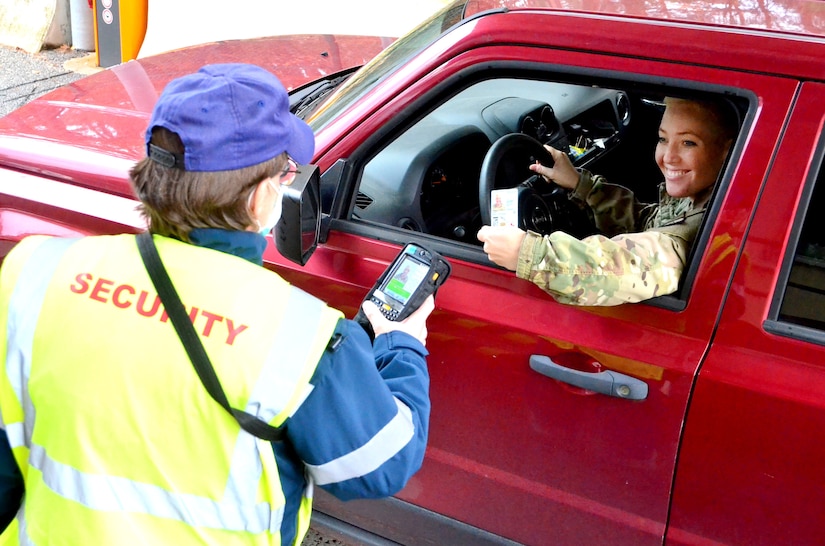
"If we come across someone who is archived, we put their information in what we call a raw data file. They don't go on the daily blotter, but it is an electronic record that they broke quarantine," Crabtree said.
Crabtree said punishment for quarantine violations is up to the owning organization's chain of command and could range from a verbal reprimand to Uniformed Code of Military Justice actions.
(Keith Pannell is assigned to U.S. Army Garrison Rheinland-Pfalz)
Nov. 30, 2020 | BY Jim Garamone , DOD News
The Joint All-Domain Command and Control framework is not just the bailiwick of communications personnel – it is warfighting business, said Marine Corps Lt. Gen. Dennis A. Crall.
Crall is the Joint Staff's director of command, control, communications and computers – commonly called the J-6. He is also the chief information officer for the Joint Staff.
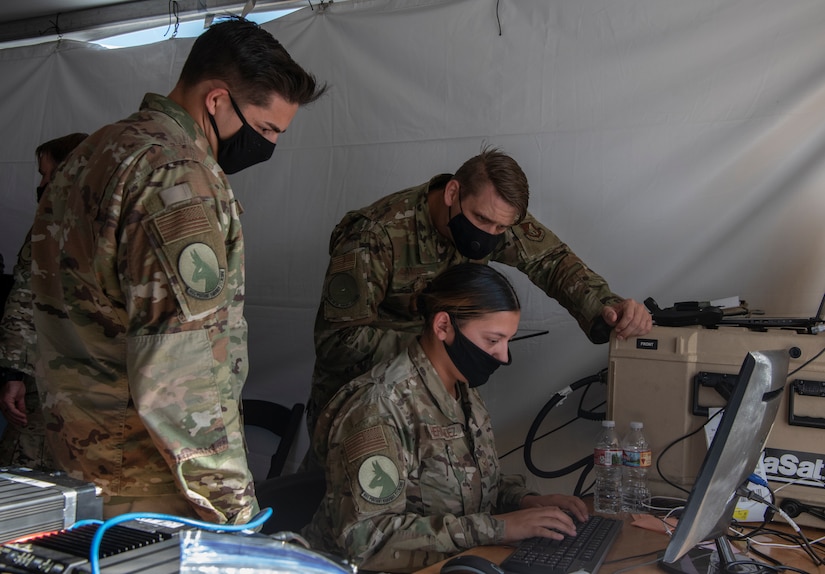
He emphasizes that the Joint All-Domain Command and Control framework– the JADC2 – belongs to warfighters. "This is warfighting business. It's not J-6 business. It's not CIO's business. It belongs with the warfighter," the general said during an interview about what is DoD's strategic approach to fighting the wars of the future.
The framework is DOD's effort to amalgamate sensors with shooters across all domains, commands and services. It sounds like simply a communications effort that will take decades to happen. Crall insists it will not. "This is about fires, and speedy engagement," he said. "If you think of it in those terms, we need to set aside for a minute what we own and what we do and look at where the department needs to be. We can then look at where we need to be based on time."
The services each have a system looking to tie sensors to shooters. The JADC2 will gather all sensor information and connect all warfighters. A threat could be sensed by an Air Force unmanned aerial vehicle but the best weapon against it could be a Navy missile fired from offshore.
A call for fire from an infantry battalion could be answered by tube artillery, rocket artillery, naval gunfire, close-air support from any service or something else.
Some of this is already happening, and Crall sees the program growing and evolving. "There are things we can do immediately," he said. "We might onboard some of these things, because they're available. You fight with what you have, not with what you want. But eventually, you will fight with what you want. So, the idea of looking at short, medium, and long range is very critical. We can't take our eye off the horizon of what we need."
Crall wants to ensure that requirements for the JADC2 framework are stated very clearly. "We will drive the JADC2 strategy to the need, and then examine what we have, and find out which pieces fit well and which pieces don't," he said.
Like every other aspect of the department, JADC2 must contribute to the national defense strategy's lines of effort. "Does it increase lethality," Crall asked. "The answer should be yes. [JADC2] makes us more lethal. We're a warfighting organization. That's what this is designed to do.''
The framework will strengthen partnerships, another line of effort in the JADC2 strategy, which is currently in the works and being drafted by Crall's staff. Allies and other mission partners are being brought to the program now and not as "a bolt on" after the framework is fielded. He noted that it is very unlikely the United States would do anything without allies and partners, and they will have their own sensors and systems that need to be accommodated. Bringing in the Five-Eye allies early in the "build" of JADC2, just makes sense, he said.
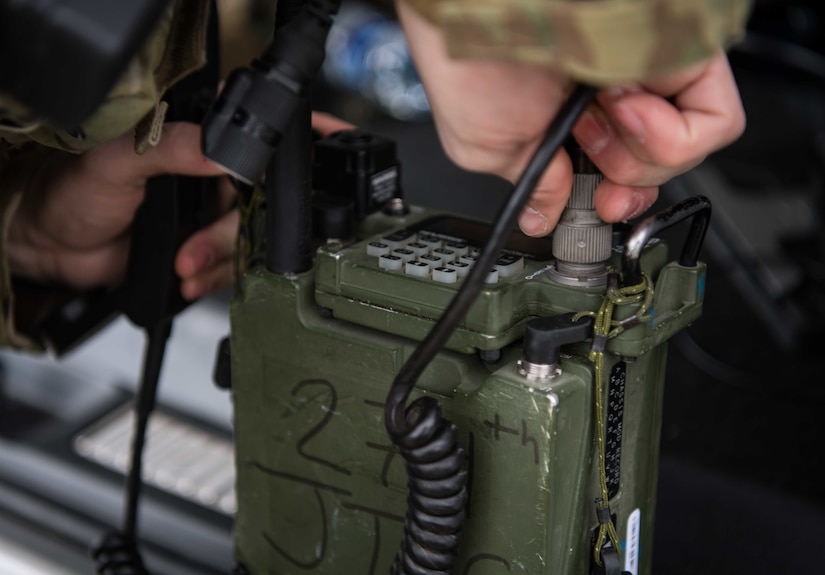
"We're never going to fight alone, we're going to fight with partners," he said. "So [JADC2] has got to mean the same thing to them as it does to us."
The third line of effort is reform and the JADC2 framework is all about changing the paradigm. "It's not a good thing to have everyone run off and develop something on their own. You end up with this idea that if it doesn't work well, at least it's expensive," he said. "We have to spend the money wisely."
The JADC2 strategy consists of lines of effort and milestones. The lines of effort have objectives and tasks and there is a plan of attack. "We have to make sure that we are working together rather than potentially at cross purposes," he said.
He said the services are working together. The service systems are "not quite integrated" but they all show promise as Crall's folks try to determine what it "looks like for the department."
Different people look at JADC2 from different perspectives. Some see descriptions of it and only concentrate on the adjectives, he said. Speed, resilient, persistent are just some and they form the "commandments" officials would compare these actions against.
Other people look at JADC2 and just see the verbs: Sense and act. "There's a lot of sensors on the battlefield," Crall said.
The growing Internet of Things has produced information that exceeds the ability to process it casually. "It comes at us in torrents, and every month, it seems we have a new sensor and a new feed," the general said. "And all this will wind up on the cutting room floor, if we don't automate and speed this up."
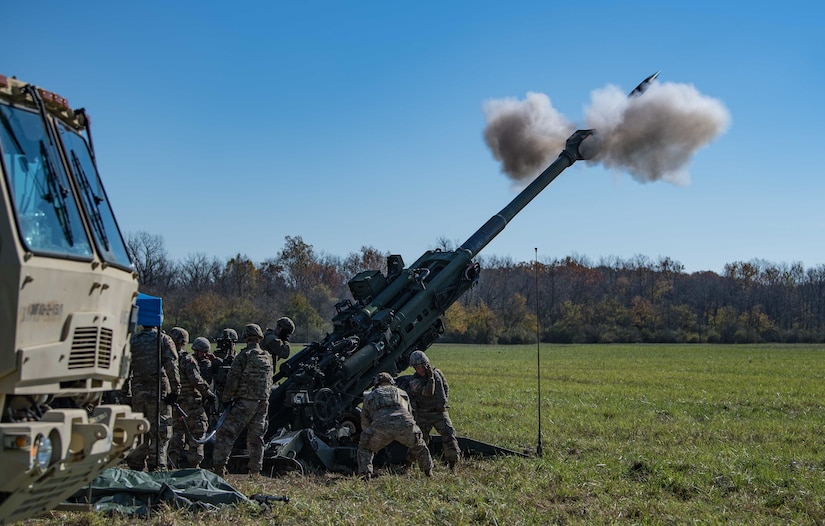
The military has no problem acting, he said. "We can make decisions at speed if that information is refined," he said. This will require some level of artificial intelligence.
Finally, to others who read the requirements they will only see the nouns. "What radio, what antenna?" Crall said. "What's the next thing you can touch and buy?"
All of these parts of speech need to be reconciled. All are important. All contribute to the framework. All have to be in sync for JADC2to work.
"In my experience, most things that are labeled interoperable, don't work together," Crall said. "It's an interface. [The system] is working, but it's not native."
Making systems interoperable is not easy, it is not cheap and most systems resist change, Crall said. "When you change one end, you've got to change a long laundry list of things to make them work together. We've got to get out of that business."
Crall's office, in concert with the DOD chief information officer, is bringing this together by working the different parts but using the same approach.
Looking to the future of JADC2, there are exercises and demonstrations, such as Bold Quest, that display capability right now. "If you view this as a puzzle, there are aspects to this capability we can employ today," the general said. "We don't have to wait for five years."
Soldiers play flag football while celebrating Thanksgiving in the Central Command area of responsibility, Nov. 27, 2020.
Airmen load water purification systems donated by Water Missions, a local Charleston charity, to be delivered to Hondurans affected by Hurricanes Eta and Iota at Joint Base Charleston, S.C., Nov. 25, 2020.
Army Spc. Trent Tardy helps carry a doghouse at a veterinarian clinic in Mitrovica, Kosovo, Nov 27, 2020. Service members delivered supplies to the clinic in their effort to support the local dogs and cats.
Air Force Tech. Sgt. Jarimaris Garcia, a registered nurse stationed at Joint Base Andrews, Md., prepares medical equipment for incoming patients within the emergency department of Del Sol Medical Center, El Paso, Texas, Nov. 24, 2020. Northern Command, through Army North, remains committed to providing flexible Defense Department support to the Federal Emergency Management Agency in support of the whole-of-America COVID-19 response.
Nov. 30, 2020
Member and observer nations of the U.S.-Adriatic
Charter, or “A5,” conducted a meeting of Defense Ministers via video
conference today. This year’s A5 Chair, Bosnia and Herzegovina, hosted
the meeting with representatives from Albania, Croatia, Kosovo,
Montenegro, North Macedonia, and Slovenia in attendance. Mr. Anthony
Tata, Performing the Duties of Under Secretary of Defense for Policy,
represented the U.S. Department of Defense.
The purpose of the session was to discuss multilateral security
priorities and strengthen NATO’s strategic partnerships in Southeast
Europe. The leaders shared lessons learned from the fight against the
COVID-19 pandemic and the importance of regional cooperation to meet
new, shared security challenges.
Representatives also discussed strengthening regional security,
combatting malign influence in Southeast Europe, and NATO’s “Open Door”
policy. All sides reaffirmed their commitment to build upon this year’s
successes of the A5 as Croatia takes over as the 2021 Chair.
Nov. 30, 2020
On Friday, the department released the memo for Extension of Maximum Telework Flexibilities extending the limited exception to policy provided by the USD memorandum on March 8, 2020.
The memo advises DOD Components may allow civilian employees to telework during an emergency ( e.g., continuity of operations event, office closure due to adverse or inclement weather, or pandemic health crisis) with a child or other persons requiring care or supervision present at home. Employees must still account for work and non-work hours during their tours of duty and take appropriate leave (paid or unpaid) to account for time spent away from normal work- related duties (e.g., to care for a child or dependent).
The memo for Extension of Maximum Telework Flexibilities can be found here.
Navy Seaman Jessica Cabrera, a laboratory technician assigned to Naval Hospital Pensacola, conducts a COVID-19 test in Pensacola, Fla., Nov. 25, 2020. The laboratory plays an integral role in NHP’s mission by providing patients with a proper diagnosis and treatment by conducting essential tests on body substances.
Navy Seaman Lincoln Brown, a laboratory technician assigned to Naval Hospital Pensacola, uses a centrifuge to prepare blood samples for laboratory testing in Pensacola, Fla., Nov. 25, 2020. The laboratory plays an integral role in NHP’s mission by providing patients with a proper diagnosis and treatment by conducting essential tests on body substances.
Army CH-47 Chinook crew members assigned to the 1st Battalion, 228th Aviation Regiment, Joint Task Force-Bravo, and Guatemala City Municipal firefighters carry a pregnant, COVID-positive patient out of a Chinook in Guatemala City, Guatemala, Nov. 27, 2020. After delivering 8,800 lbs. of humanitarian aid food items to Playa Grande, Guatemala, the crew then provided medical evacuation support to get the patient to a properly equipped facility.
Nov. 30, 2020 | BY C. Todd Lopez , DOD News
The acquisition and sustainment community recently rewrote the Defense Department's 5000-series acquisition regulations. America's modeling and simulation community will be able to help the department achieve some of the goals it hoped to reach with the rewrite, the deputy undersecretary of defense for acquisition and sustainment said.
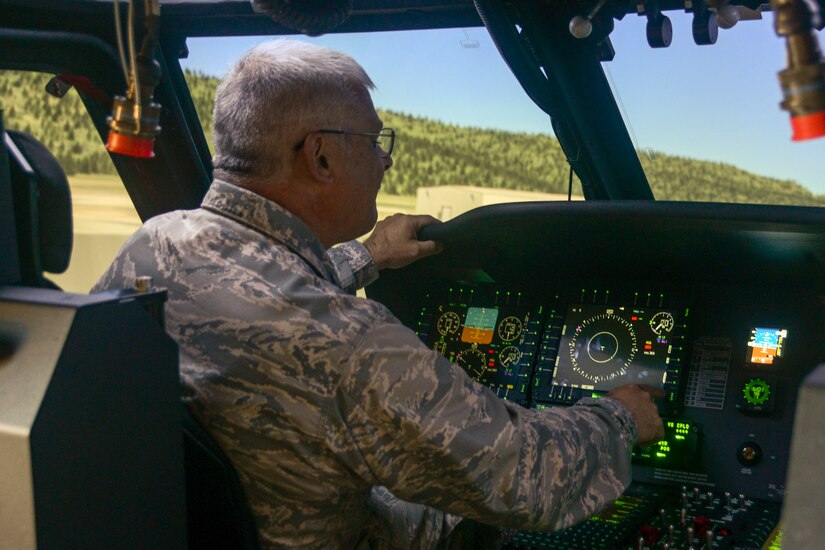
"The same technologies ... you investigate at I/ITSEC are the ones that will allow us to move to an agile and adaptive acquisition framework and be much more agile," Alan R. Shaffer said today during a presentation to the National Defense Industrial Association's virtual Interservice/Industry Training, Simulation and Education Conference.
Digital engineering, digitization, modular open systems architecture and model composability are all key within the I/ITSEC community, Shaffer said.
"They're also the bedrock for an agile acquisition framework and will provide us the tools we need to cut development time," he said.
Modeling and simulation, Shaffer said, can be an integral part of speeding delivery of the tools the U.S. military needs to be competitive.

"We should be able to do a much better job in assessing to be fit for purpose by use of simulation and the performance of red versus blue systems and simulators to really understand how what we are going to buy in the Department of Defense will operate in a real world," Shaffer said.
Digital engineering, digital twins and systems engineering, Shaffer said, can provide greater capability to U.S. forces, reduce acquisition cycle times, reduce costs and schedules for testing, and bring about a reduced cost for sustainment of systems after they are delivered.
"This cumulative effect of capabilities is what I/ITSEC is all about," he said.
Shaffer industry attendees of the virtual conference to think about the convergence of technologies that allow tools to be used for both operational assessment as well as testing and training.
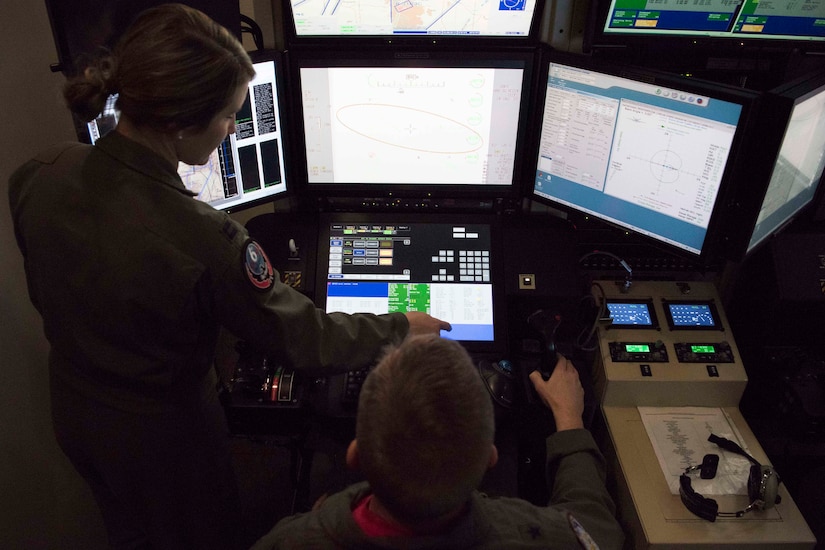
"Think about software that will allow us to support acquisition development, training of troops, and test, all simultaneously — I think it's within our grasp," he said.
The department also needs help from the modeling and simulation industry to accelerate acquisition and fielding timelines and to provide more depth in its analytic understanding necessary for decision making, Shaffer said.
Retired Air Force Lt. Col. John Mahler, who was once assigned to the 342nd Bombardment Squadron, celebrates his 102nd birthday as he watches a parade of military and first responder vehicles in Butler, Pa., Nov. 12, 2020.
Acting Defense Secretary Christopher C. Miller visits troops at Naval Support Activity Bahrain, Nov. 25, 2020.
Acting Defense Secretary Christopher C. Miller meets with troops on Thanksgiving at Al Udeid Air Base, Qatar, Nov. 26, 2020.
Acting Defense Secretary Christopher C. Miller speaks with a service member on Thanksgiving at Al Udeid Air Base, Qatar, Nov. 26, 2020.
An Alaska Army National Guard UH-60L Black Hawk helicopter lands to pick up Air Force special warfare airmen during small unit training at Joint Base Elmendorf-Richardson, Alaska, Nov. 18, 2020. Conducted under physical and mental stress, small unit training reinforces fundamental combat skills and fosters team cohesion.
Acting Defense Secretary Christopher C. Miller serves Thanksgiving dinner to troops at Camp Lemonnier, Djibouti, Nov. 26, 2020.
Nov. 26, 2020
Acting Secretary of Defense Christopher C. Miller met with Qatari Minister of State for Defense Affairs Dr. Khalid bin Mohammad Al Attiyah today at Al Udeid Air Base in Qatar.
The Acting Secretary expressed his appreciation for the Amir’s hospitality in hosting 8,000 U.S. service members and DoD civilians. The leaders discussed progress on efforts to continue and strengthen our defense cooperation, ensure the security and stability of the region, and coordinate responses to mutual threats.
While at Al Udeid Air Base, Acting Secretary Miller also met with U.S. service members to wish them a happy and healthy Thanksgiving holiday.
Nov. 27, 2020 , 436th Airlift Wing
Combat Arms Training and Maintenance instructors assigned to the 436th Security Forces Squadron resumed training and qualification classes at Dover Air Force Base, Delaware, by incorporating established COVID-19 social distancing and sanitization guidelines to provide a safe training environment while meeting mission needs.

Prior to the COVID-19 pandemic, M4 and M9 weapon training and qualification classes were held on separate days for each weapon, with approximately 21-25 students per class.
Under the new training procedures, M4 and M9 classes are now combined into a longer, single day of training, with a maximum occupancy of 14 students.
The instructors provide students with enough information to make them feel comfortable and confident enough to qualify on each weapon.
"We know that security forces are relied upon to continue providing unrivaled mission support in order for Team Dover to execute its mission," Air Force Lt. Col. Schneider Rislin, 436th Security Forces Squadron commander, said. "We wanted to ensure we could continue weapon qualification for our deployers, so CATM devised a COVID-19-friendly course of action to safely conduct this critical training."
Currently, M4 and M9 training is provided to Team Dover members in the following order of priority: deployment, permanent change of station, duty fire and sustainment.
"We never actually stopped [training] … There were mission-essential people who needed to fire," Air Force Tech. Sgt. Joseph Haller, 436th SFS combat arms training noncommissioned officer in charge, said. "We just ramped back up within the past week."
To help mitigate the spread of COVID-19, Haller and the security force squadron leadership determined that unit-specific training would be the best course of action.
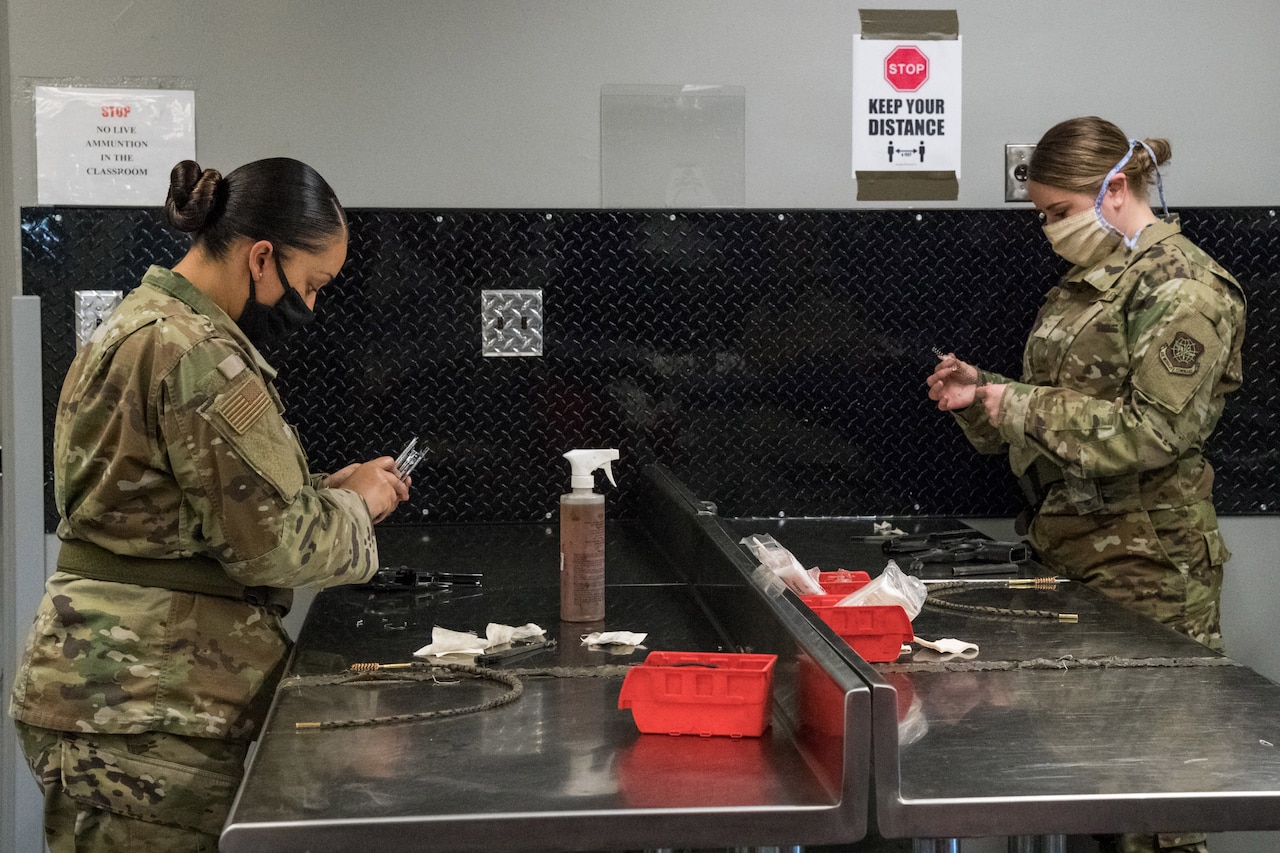
"It eliminates cross-contamination between the squadrons," Haller said. "So if someone does become sick, it only is going to stay within that squadron."
A rotating schedule was devised to protect the instructors and keep them healthy.
"We have two three-person teams for the six-man shop; that's in case one of us CATM instructors gets sick, the other three-person team can still complete the mission," Haller said.
Upon entering the CATM building, posted signs help remind students to wear their masks and use hand sanitizer throughout the day.
"They [students] have the guarantee that all the classrooms have been sanitized," Air Force Staff Sgt. Jose Bracero-Camareno, 436th SFS combat arms instructor, said. "Every time we finish a class or break for lunch, the room gets sanitized."
Using a two-gallon pressurized sprayer and spray bottles, the instructors sanitize the offices, classrooms and the firing range at least three times a day.
"The magazines and cleaning equipment also get sanitized after use. It's all sprayed down with bleach-water [solution] after every use," Haller said.
The students are instructed to wear a mask whenever six feet of separation cannot be maintained, whether in the classroom or on the firing range.
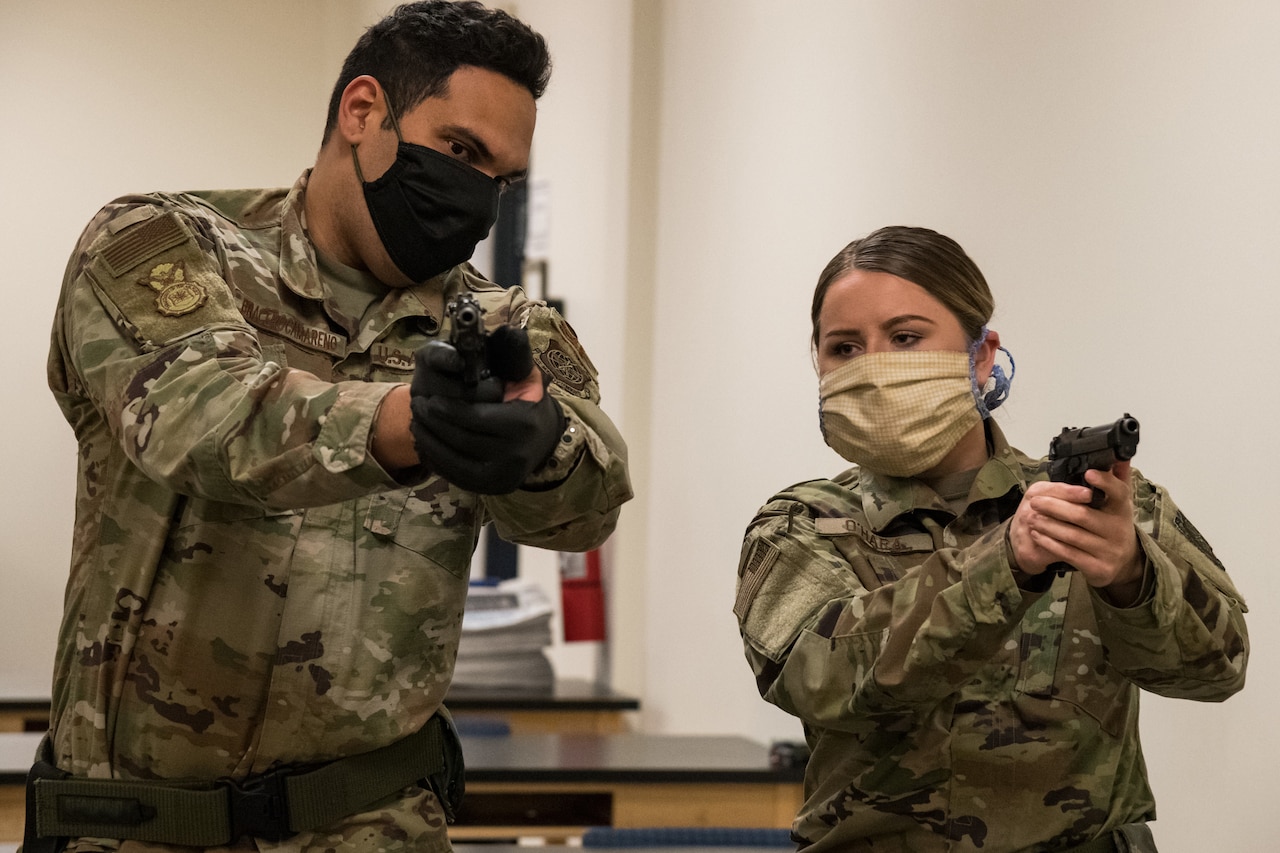
Attending CATM for an upcoming deployment, Air Force Airman 1st Class Kaleigh O'Hara, 436th Comptroller Squadron budget analyst, stated, "Wearing the mask is definitely difficult, but I feel comfortable."
In addition, mask wear on the firing range can create a minor inconvenience for some users.
"The eye pro [goggles] starts getting foggy a little bit," Bracero-Camareno said. "I tell the students they can move the mask a little below their nose only when they are shooting."
Whether it's for a deployment or a permanent change of station, the instructors are keeping Team Dover's air mobility warriors trained, qualified and mission-ready throughout the COVID-19 pandemic.
"I am proud of my CATM instructors' ability to adapt to a changing environment and still get the mission done," Rislin said.
Nov. 27, 2020
Acting Secretary of Defense Christopher C. Miller celebrated Thanksgiving with U.S. military personnel and contractors at Camp Lemonnier, Djibouti and in Mogadishu, Somalia. He recognized their commitment to mission and relayed his gratitude for the sacrifices they and their families make to protect the freedoms we enjoy and the American way of life.
While in these locations, the Acting Secretary also reaffirmed U.S. resolve in seeing the degradation of Violent Extremist Organizations that threaten U.S. interests, partners, and allies in the region, and the importance of the international community’s continuing efforts on this front.
A soldier prepares a sample to be tested for COVID-19 at Joint Base Elmendorf-Richardson, Alaska, Nov. 20, 2020.
Army Pvt. Daniel Murtagh tests a patient for COVID-19 at Joint Base Elmendorf-Richardson, Alaska, Nov. 20, 2020. The base stood up a drive-thru testing clinic to offer a fast, safe way to provide testing to its personnel and their dependents.
Sailors aboard the USS Nimitz wave at U.S. and Indian aircraft during Malabar, an India-led multinational exercise, in the Indian Ocean, Nov. 20. 2020.
Sailors participate in a general quarters firefighting drill aboard the USS Sterett in the Indian Ocean, Nov. 24, 2020.
Sailors and Marines create holiday cards during a morale, welfare and recreation event aboard the USS Makin Island in the Pacific Ocean, Nov. 14, 2020.
Navy Lt. j.g. Justin Bishop and Chief Petty Officer David Thompson keep watch in the navigation bridge aboard the USS Sioux City in the Caribbean Sea, Nov. 23, 2020.
A member of an Army HH-60 Black Hawk helicopter crew organizes food bundles at San Pedro Sula, Honduras, Nov. 23, 2020. At the request of the Honduran government, the U.S. military is providing aerial support for relief operations in areas impacted by Hurricane Iota.
A soldier passes a bundle of food bound for those affected by Hurricane Iota to a Honduran air force airman at San Pedro Sula, Honduras, Nov. 23, 2020. At the request of the Honduran government, the U.S. military is providing aerial support for relief operations in areas impacted by the hurricane.
A Marine is presented the French fourragere during a dedication ceremony at Camp Lejeune, N.C., Nov. 25, 2020. The braided cord was originally awarded to 5th and 6th Marine Regiments for their historic accomplishments in France during World War I.
Nov. 25, 2020
Acting Secretary of Defense Christopher C. Miller is
visiting the Middle East for his first international trip leading the
Defense Department.
Highlighting the trip, Acting Secretary Miller will meet with service
members to express his gratitude for the selfless service to the Nation
by both them and their families and to wish them a happy and healthy
Thanksgiving holiday.
Acting Secretary Miller is also scheduled to meet with U.S. commanders
and host nation leaders to address security interests and priorities of
countering violent extremism and combating malign activities that
threaten the sovereignty and stability of the region.
U.S. Marines join Marines from the Netherlands for dive training near Savaneta, Aruba, Nov. 20, 2020. Diving skills are critical when fighting in littoral and coastal regions.
Navy Petty Officer 2nd Class Sierra Edwards works on the roof of a concrete pavilion for the U.S. Coast Guard at Naval Base Guam, Nov. 19, 2020.
Air Force Sgt. Chase McConnell and military training dog, Duece, train at Andersen Air Force Base, Guam Nov. 20, 2020.
Army Chief Warrant Officer 4 Tony Leota administers the oath of re-enlistment to Sgt. Noel Diaz during a ceremony in Odenton, Md., Oct. 28, 2020.
An Air Force B-1 Lancer, center, and two F-22 Raptors fly in formation during a Veterans Day ceremony at Asan Beach Park, Guam, Nov. 11, 2020.
An airman returning from deployment greets a family member at Rosecrans Air National Guard Base, Mo., Nov. 19, 2020.
Navy Petty Officer 3rd Class Cullen Mcardle lowers into the sea during search and rescue swimmer training aboard the USS Barry in the Philippine Sea, Nov. 22, 2020.
A soldier receives a plate of food during the annual Fort McCoy Thanksgiving meal at Fort McCoy, Wis., Nov. 19, 2020. The meal included all the traditional Thanksgiving staples and was served by some of the base commanders.
Connecticut Army National Guard 1st Lt. Edwin Escobar grabs a couple of turkeys for families during the Bridgeport Rescue Mission's annual Great Thanksgiving Project in Bridgeport, Conn., Nov. 20, 2020. The project donated about 4,000 Thanksgiving meals to families in need.